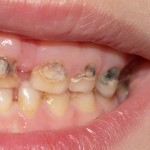
Early childhood caries (ECC) is a common and significant public health problem and is rapidly increasing in low- and middle-income countries. Iron deficiency anaemia is also a common and widespread nutritional deficiency with a high prevalence in pre-school children. Pain and discomfort from carious teeth may impact on nutritional impact and some studies have suggested a link between caries and iron deficiency anaemia (IDA).
The aim of this review was to assess if there is an association between early childhood caries and iron deficiency anaemia.
Methods
A protocol for the review was registered and searches conducted in the Medline/ PubMed, Embase, LILACS, Cochrane Oral Health Group’s Specialized Register, CINAHL via EBSCO, Web of Science, SCOPUS, OpenGrey, Google Scholar, PsycExtra, and NTIS databases. This was supplemented by handsearching of the journals, Community Dental Health, International Journal of Paediatric Dentistry, Paediatrics, Paediatric Dentistry, European Archives of Paediatric Dentistry, European Journal of Paediatric Dentistry, Paediatric Dental Journal, Community Dentistry, and Oral Epidemiology and International Journal of Clinical Paediatric Dentistry Cross-sectional, case-control, and cohort studies published in English between 1998 to May 2020 were considered. Two reviewers independently selected studies, extracted data and assessed study quality using the Newcastle Ottawa Scale. Meta-analysis were conducted and reported as mean difference (MD) and odds ratio (OR) with 95% confidence intervals. The certainty of the evidence was assesses using the Grading of Recommendations Assessment, Development, and Evaluation (GRADE)
Results
- 14 studies (1 cohort, 3 case-control, 10 cross -sectional) involving a total of 1770 patients (1364 cases, 406 controls) were included.
- Studies were conducted in Canada, Egypt, India, Iran, Israel, Taiwan and Turkey.
- 13 studies reported haemoglobin levels, 12 studies reported mean corpuscular volume (MCV) 9 studies on Serum Ferritin.
- No studies were considered to be at low risk of bias, 12 were considered to be at moderate risk and two at high risk.
- 11 studies reported that children with ECC were at higher risk of iron deficiency, 3 studies reported no link.
- 7 studies contributed to the meta-analyses indicating an increased likelihood of iron deficiency in children with ECC but no differences when comparing blood parameters as shown in table: –
| No of studies | Odds ratio (OR) or Mean difference (MD) with (95% CI) | |
| Iron deficiency anaemia | 4 | OR = 6.07 (3.61 to 10.21) |
| Haemoglobin | 3 | MD = 0.95 (−2.53, to 0.63) |
| Serum Ferritin | 4 | MD = 5.31 (−12.60 to 1.99) |
| Mean corpuscular volume | 3 | MD = −2.82 (−6.65 to 1.00) |
- The GRADE certainty of evidence was assessed as very low.
Conclusions
The authors concluded: –
This systematic review demonstrates an association between ECC and increased odds of IDA rather than it being the cause for IDA. Further longitudinal studies with robust methodology are required to determine an evidence-based association.
Comments
The authors have searched a wide range of databases although inclusions were restricted to publications in English since 1998 which may have excluded some relevant studies. Only 14 studies were included and the majority of these were of a cross-sectional design and none of the included studies were at low risk of bias. Few of the included studies considered potential confounding factors such as socio-economic status or dietary factors and reference values for blood parameters showed high heterogeneity. So, while the findings suggest an association between ECC and iron deficiency the certainty of the evidence was assessed a being very low consequently the findings of this review should be considered very cautiously.
Links
Primary Paper
Easwaran HN, Annadurai A, Muthu MS, Sharma A, Patil SS, Jayakumar P, Jagadeesan A, Nagarajan U, Pasupathy U, Wadgave U. Early Childhood Caries and Iron Deficiency Anaemia: A Systematic Review and Meta-Analysis. Caries Res. 2022;56(1):36-46. doi: 10.1159/000520442. Epub 2021 Nov 8. PMID: 34749377.
Other references
Dental Elf – 25th Nov 2019
Dental Elf – 8th Jul 2019
Dental Elf – 3rd Feb 2016
